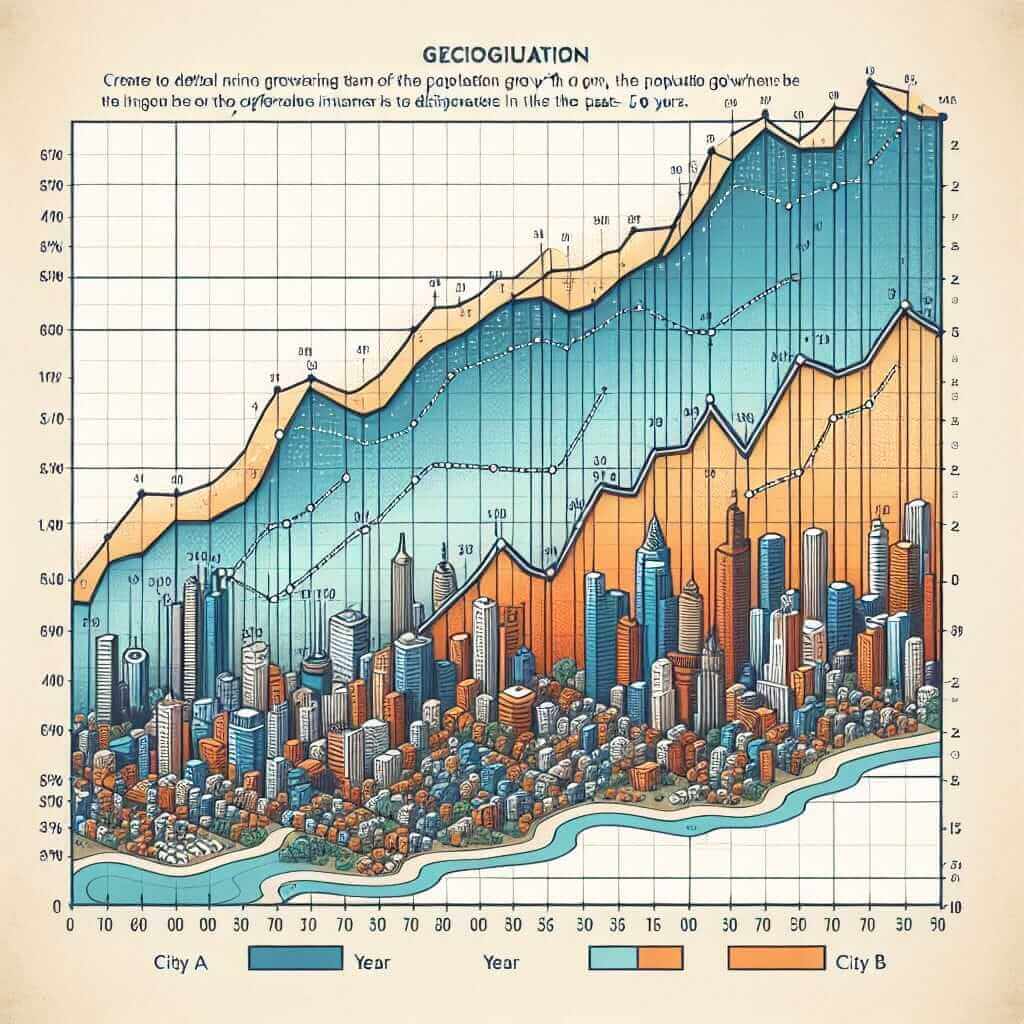As an IELTS instructor with over 20 years of experience, I understand the importance of IELTS Writing Task 1 and the anxiety it can cause for test-takers. This comprehensive guide will demystify the task, outlining exactly what it entails and providing you with the knowledge and strategies to excel.
Understanding IELTS Writing Task 1
In the IELTS Academic Writing test, Task 1 requires you to write a minimum of 150 words describing visual information. This information is typically presented in one of the following formats:
- Graphs (Line graphs, Bar graphs, Pie charts): These illustrate trends, comparisons, and proportions.
- Charts (Flow charts, Process diagrams): These showcase processes or sequences of events.
- Maps: These depict geographical changes over time or compare different locations.
- Tables: These present data in a structured format with rows and columns.
Your task is to accurately analyze the given visual and present the key features and information in a clear, concise, and organized manner.
How to Approach IELTS Writing Task 1
1. Analyze the Visual Information
Identify the type of visual: This will help you determine the appropriate language and structure for your writing.
Understand the main message: What is the visual trying to convey? What are the most significant trends or patterns?
Take note of key features: Look for highs, lows, changes, comparisons, and any other noteworthy information.
2. Organize Your Response
Introduction (Paraphrase the Task): Rephrase the task instructions in your own words to demonstrate understanding.
Overview (Summarize Key Trends): Present the most significant findings or overall trends without going into specific details.
Body Paragraphs (Detailed Description): Analyze the visual information in detail, providing specific data, comparisons, and trends. Use linking words and phrases to ensure a smooth flow of information.
Conclusion (Optional): Briefly summarize the main points or provide a final observation. A conclusion is not always necessary for Task 1, but it can be included if time permits.
3. Use Appropriate Language
Vocabulary: Use a range of vocabulary related to describing trends (increase, decrease, fluctuate, stable, etc.), making comparisons (similarly, in contrast, however, etc.), and presenting data (approximately, significantly, respectively, etc.).
Grammar: Use a variety of grammatical structures, including complex sentences, passive voice (where appropriate), and accurate tense usage (often present simple for describing facts and figures).
Example: Analyzing a Line Graph
Let’s say you are presented with a line graph showing the population growth of two cities over a period of 50 years.

Introduction:
The line graph illustrates the population changes in City A and City B from 1970 to 2020.
Overview:
Overall, both cities experienced population growth, but City A showed a more significant increase compared to City B.
Body Paragraph 1 (City A):
In 1970, the population of City A stood at approximately 2 million. This figure rose steadily over the next two decades, reaching 3 million by 1990. Subsequently, a more rapid growth was observed, with the population surging to 5 million in 2020.
Body Paragraph 2 (City B):
Similarly, City B also witnessed population growth, although at a slower pace. Starting at 1.5 million in 1970, its population gradually increased to 2.5 million by 2020.
(Optional) Conclusion:
In conclusion, both cities experienced population growth, but the increase in City A was considerably more pronounced than that of City B.
Tips for Success
- Practice regularly: Familiarize yourself with different question types and practice analyzing and writing about various visual data.
- Manage your time effectively: Allocate 20 minutes for Task 1.
- Focus on accuracy: Ensure your description accurately reflects the information presented in the visual.
- Use clear and concise language: Avoid using overly complex vocabulary or grammar that might hinder understanding.
- Proofread carefully: Check for any grammatical or spelling errors before submitting your response.
Remember, success in IELTS Writing Task 1 requires a combination of analytical skills, language proficiency, and exam strategy. By understanding the task requirements, practicing regularly, and employing the tips outlined above, you can approach this section of the IELTS exam with confidence.